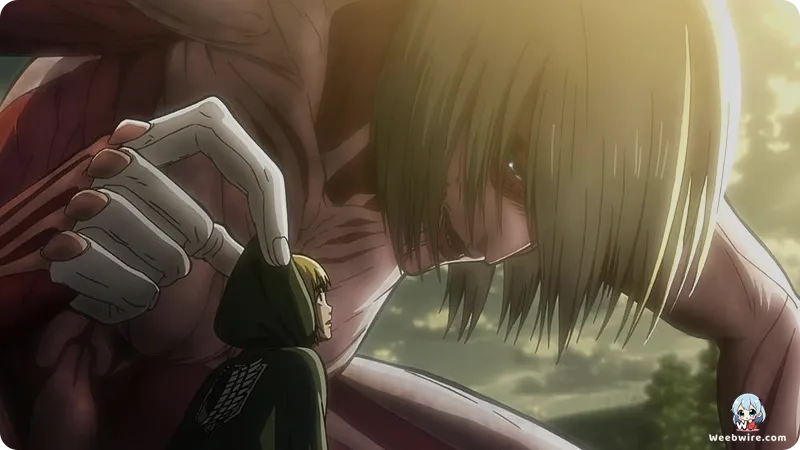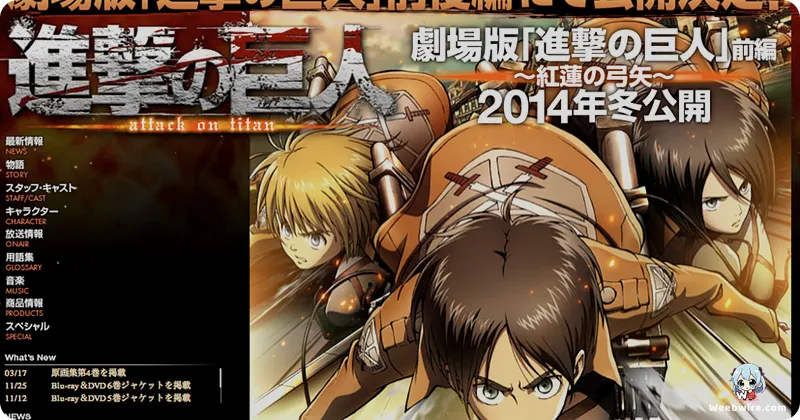Beyond the Walls: Unearthing the Cinematic Brilliance and Hidden Lore of 'Attack on Titan Part II: Wings of Freedom'

Dive deep into the colossal world of Attack on Titan with an exclusive look at its acclaimed cinematic presentation, Attack on Titan Part II: Wings of Freedom. Released in 2015, this compilation film is far more than a mere recap; it’s a meticulously crafted re-imagining of pivotal moments from the anime’s first season, specifically covering episodes 14 through 25. Audiences are treated to an intensified narrative, featuring enhanced animation, refined sound design, and a dynamically refreshed pacing that heightens the visceral terror and desperate courage inherent in humanity's battle against the colossal Titans. This theatrical experience offers a unique lens to appreciate the intricate artistry and profound thematic depth that brought Hajime Isayama's grim yet captivating vision to life.
Creator's Vision and Titan Origins
The profound impact of Attack on Titan is deeply rooted in its creator, Hajime Isayama’s, personal journey. Isayama has revealed how his childhood in a rural Japanese town, encircled by mountains, fostered a pervasive sense of claustrophobia, a feeling vividly translated into the iconic walled cities protecting humanity. This personal connection imbues the narrative with raw authenticity. Furthermore, the terrifying designs of the Titans themselves are a fascinating blend of diverse inspirations; from martial artist Yushin Okami, influencing the Armored Titan, to the unsettling expressions of intoxicated individuals, informing the grotesque countenances of mindless Titans. This unique fusion forged creatures that are not just monstrous but disturbingly human-like, amplifying the horror.
Early Concepts and Creative Pivots
Intriguing early conceptualizations reveal alternative paths for key elements. Eren Yeager, the passionate protagonist, was initially conceived as a more stoic character. The Survey Corps was also originally envisioned utilizing firearms instead of the now-iconic Three-Dimensional Maneuver Gear (ODM gear). This strategic pivot to an agile, blade-based combat system delivered breathtakingly dynamic action sequences, adding a distinct layer of skill to the soldiers. Even more surprisingly, Isayama once considered making the Titans capable of speech, an idea indicative of the deep mythology explored during the manga's development.

Animation and Sound Design Excellence
The technical prowess of WIT STUDIO, the animation house, is exemplary. Their animation of the ODM gear sequences, in particular, is a testament to their dedication, showcasing rapid, fluid movements. Wings of Freedom allowed the studio to further refine these sequences, creating an even more visually stunning cinematic experience. Complementing this visual feast is Hiroyuki Sawano’s indelible musical score, an integral cornerstone of the series’ success. His distinctive blend of orchestral grandeur, electronic elements, and powerful vocal tracks, including iconic pieces like “Guren no Yumiya” and “Vogel im Käfig,” elevates moments of triumph and despair.
Ultimately, Attack on Titan Part II: Wings of Freedom stands as a meticulously curated and enhanced cinematic odyssey. It invites both new viewers and seasoned fans to appreciate the extraordinary artistry, complex storytelling, and profound impact of one of anime's most iconic sagas. This film powerfully cements the legacy of the first season, expertly setting the stage for the even grander narrative twists that would follow, ensuring its place as a cornerstone of modern anime.
Credits
Attack on Titan Part II: Wings of Freedom
Author
Hajime Isayama
Cover Art
WIT STUDIO Art Team
Studio
WIT STUDIO
Publisher
Kodansha
Producers





